Finally, a Monstera Guide That Actually Makes Sense
I’ve spent years with my hands in the soil, working with all sorts of tropical plants in every setting you can imagine. But honestly, few things beat the feeling of seeing a new Monstera deliciosa leaf unfurl with those perfect, iconic splits. It’s like the plant is giving you a high-five. And while they aren’t diva-level difficult, they do ask you to understand them a little better than your average houseplant.
In this article
Think about it: most of us grab our first one from a big-box store. It’s a cute little thing in a 6-inch pot with solid, heart-shaped leaves. You get it home, you water it, and… nothing. You wait and wait for those famous splits (the technical term is fenestrations) to appear. So what gives?
The secret is realizing it’s not just a potted plant; it’s a climber. In the wild, it starts life on the dark rainforest floor and then scrambles its way up tree trunks to find the light. Once you get that one simple fact, everything else about its care just clicks into place. This isn’t textbook theory; this is the practical, hands-on stuff that helps a plant go from just surviving to truly thriving.
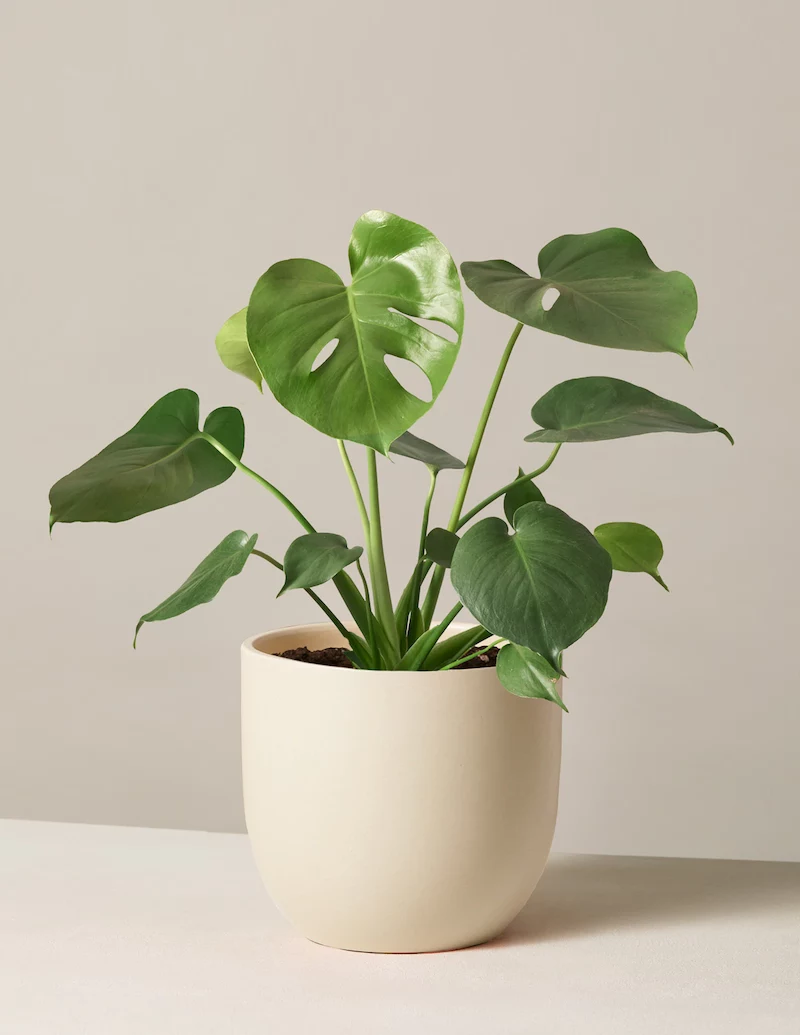
Your Monstera Wants to Be a Climber
Before we even whisper the words “soil” or “water,” let’s get inside the plant’s head. In the humid forests of Central and South America, a Monstera starts as a seed on the ground. As a little seedling, it actually grows away from light, searching for the dark shadow of a tree trunk. Pretty cool, right? Once it finds a tree, its whole mission changes. It shoots out strong aerial roots to latch on and begins its climb toward the sunny canopy.
This journey is what triggers the splits. Those fenestrations are a sign of maturity. A young plant on the dim forest floor doesn’t need them, but as it climbs higher and the leaves get bigger, they serve a few key purposes. They let patches of sunlight filter through to the lower leaves, help massive leaves survive tropical storms by letting wind pass through, and even channel rainwater down to the base of the plant. A Monstera in your home without splits is basically saying, “I’m either too young, or I don’t have enough light to bother growing up yet.”
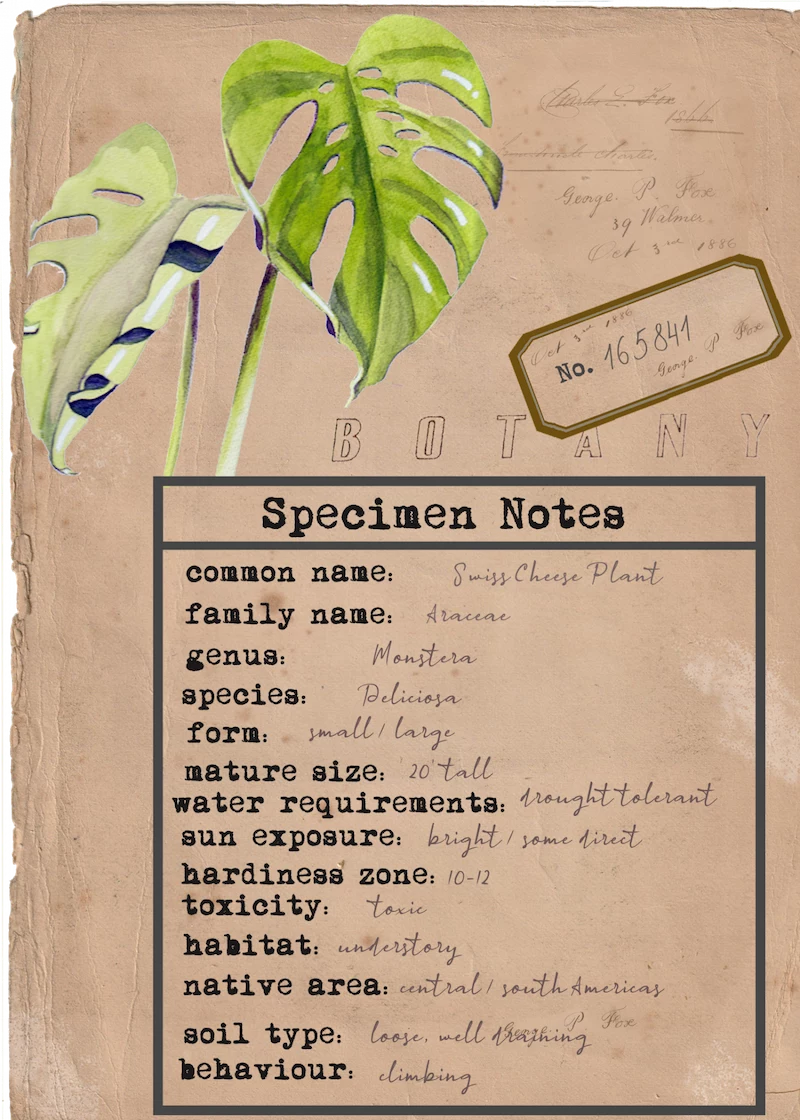
Quick Aside: Is It a Deliciosa or a Borsigiana?
Okay, let’s clear something up. There’s a lot of confusion out there because two main varieties are sold, often under the same name. You have the ‘true’ deliciosa and then a variety often called borsigiana. To be frank, the care is almost identical, so don’t stress.
The main difference is in their growth habit. The true deliciosa tends to be stockier, with a more sprawling, wild look. The borsigiana is more of a determined vine that grows faster and more vertically. The pro-level tell is the little joint that connects the leaf to the leaf-stalk. On a mature true deliciosa, this joint (the geniculum) looks kind of wrinkly or ruffled. On the borsigiana, it’s smooth. Most plants you find in non-specialty stores are the borsigiana type because they grow faster for sellers. Knowing which you have just helps you predict if it’s going to grow out or up!
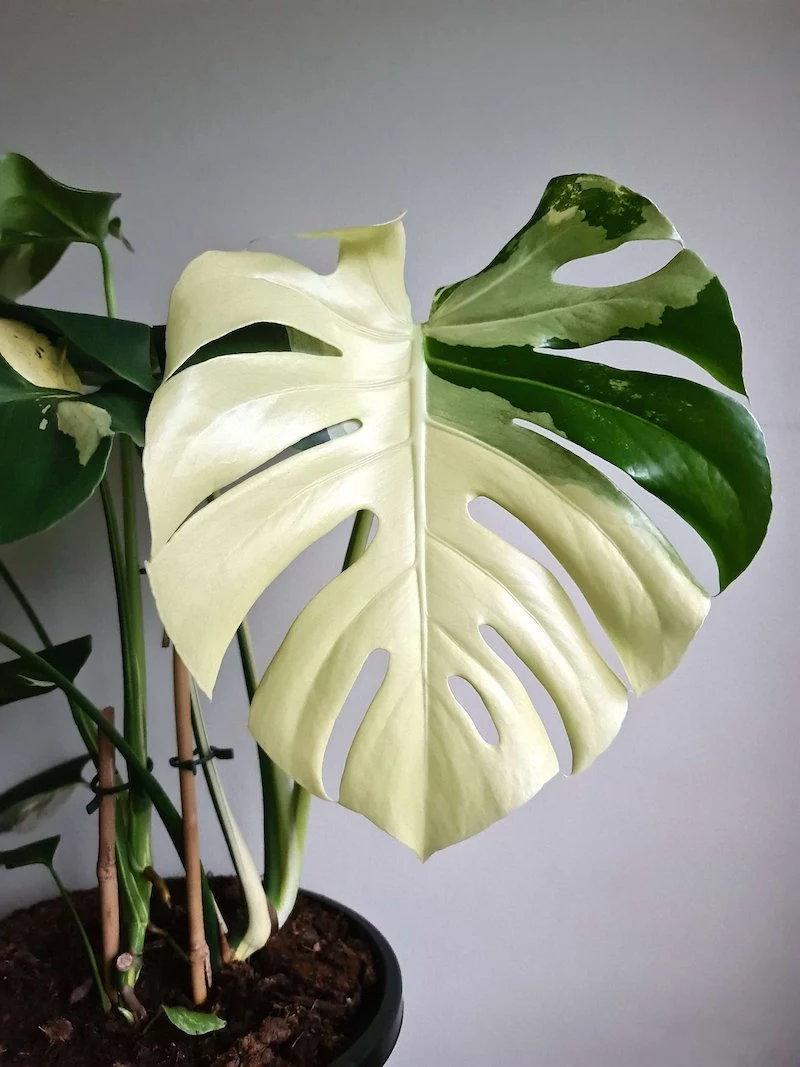
Creating the Perfect Jungle Vibe at Home
Your main job is to fake a rainforest understory. Nail the light, support, and soil, and you’ll avoid 90% of the common problems people run into. Trust me on this.
Light: What “Bright, Indirect Light” Actually Means
This is the most important part. Everyone says “bright, indirect light,” but what does that really mean for your living room? Think of it as the brightest spot in a room that doesn’t get hit by direct, scorching sunbeams for hours on end.
An east-facing window is often the sweet spot—it gets gentle morning sun. A south- or west-facing window can be too intense, so you’d want to pull the plant back several feet or hang a sheer curtain to diffuse the light. I learned this the hard way once when I left a beautiful Monstera too close to a west window and came back to find its leaves had yellowish, scorched patches. It was a total face-palm moment! The plant recovered, but those leaves were scarred for good.
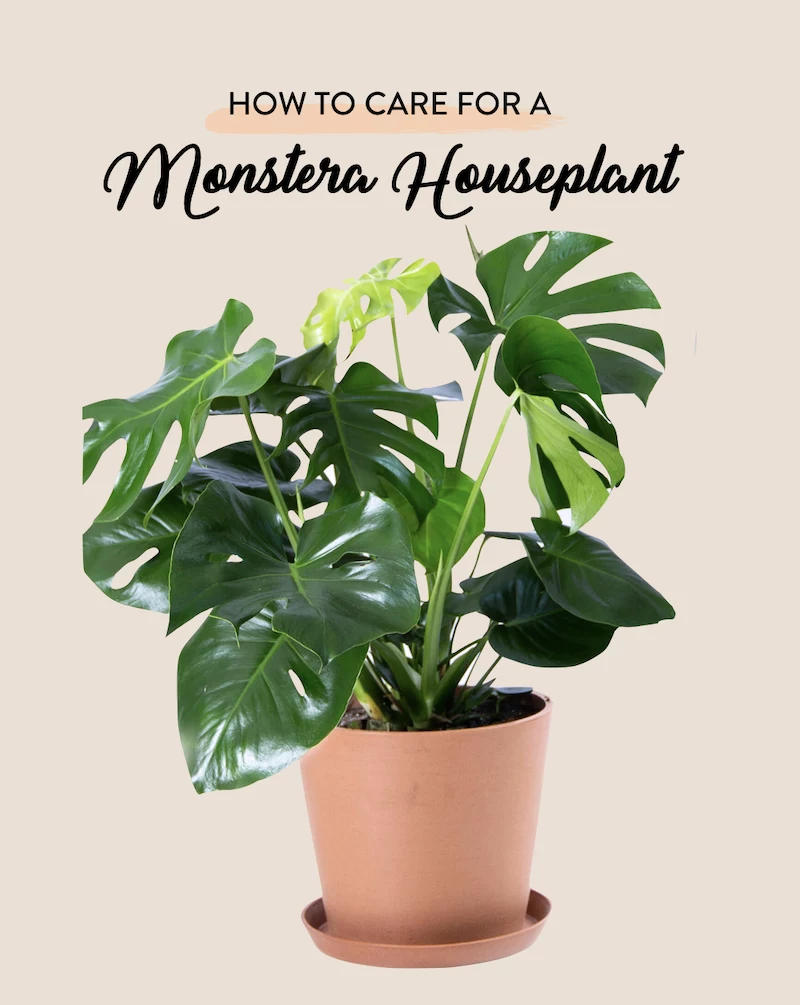
Low-light apartment? Don’t despair. You can absolutely use a grow light. You don’t need a fancy, expensive setup. A simple full-spectrum LED bulb in a regular lamp fixture, positioned a couple of feet above the plant for 8-10 hours a day, can make a world of difference.
Soil: Ditch the Standard Potting Mix
Monsteras are epiphytes, meaning they grow on other things, not in dense soil. So that heavy, standard potting soil from the bag is a recipe for root rot. They need a chunky, airy mix that lets their roots breathe.
Here’s my go-to recipe. It’s super easy. Just mix equal parts of:
- Orchid Bark
- Perlite
- Coco Coir (or Peat Moss)
Then, toss in a handful of worm castings for some natural nutrients. You can find all these ingredients at a local garden center or online. Expect to spend between $30 and $50 to buy the separate bags, but you’ll have enough to repot your entire plant collection for a year.
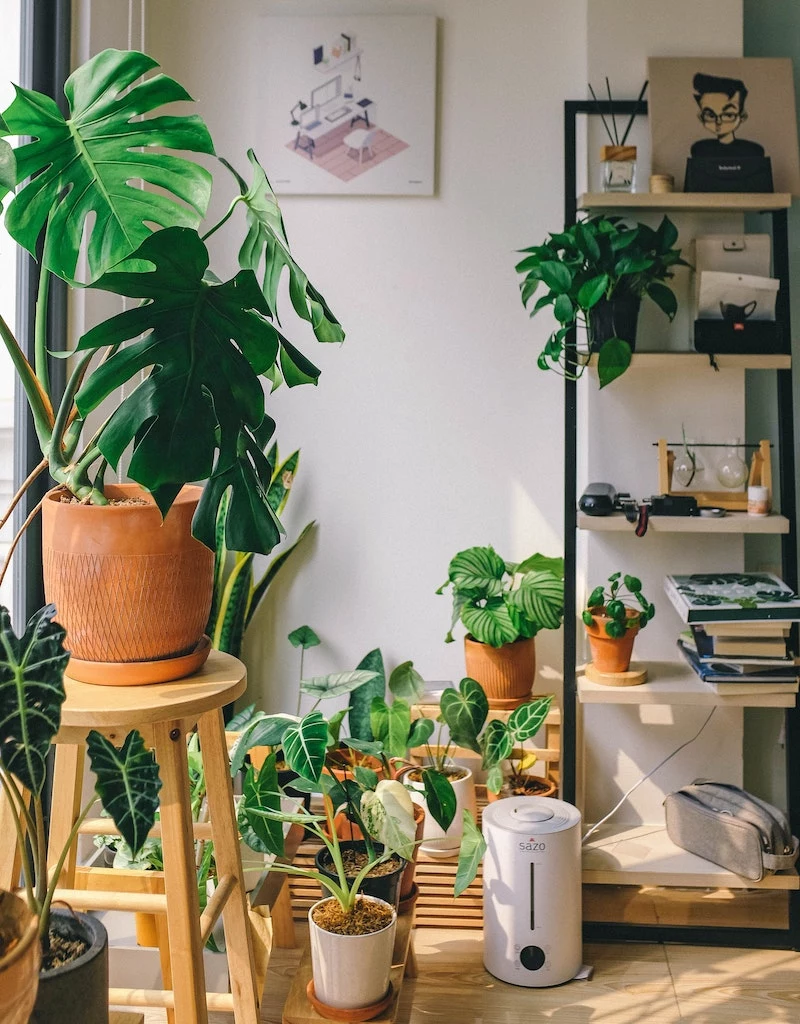
Watering & The Most Common Mistakes
The number one mistake I see is people watering on a strict schedule. Don’t do it! Your plant’s needs change with the season, light, and humidity. Instead, use the finger test. Seriously, it’s foolproof.
Stick your finger two inches down into the soil. If it comes out dry, it’s time to water. If you feel any moisture, wait a few more days and check again. When you do water, do it thoroughly until water runs out the bottom. And this brings me to another huge mistake: make sure your pot has drainage holes! Letting a Monstera sit in a saucer of water is one of the fastest ways to kill it.
Support: Give It Something to Climb!
Remember, your Monstera wants to climb. Giving it a support pole isn’t just for looks; it encourages the plant to mature, which means bigger leaves and more splits! A moss pole is a great option (you can find them for around $20-$30), as it holds moisture and gives the aerial roots something to grow into.
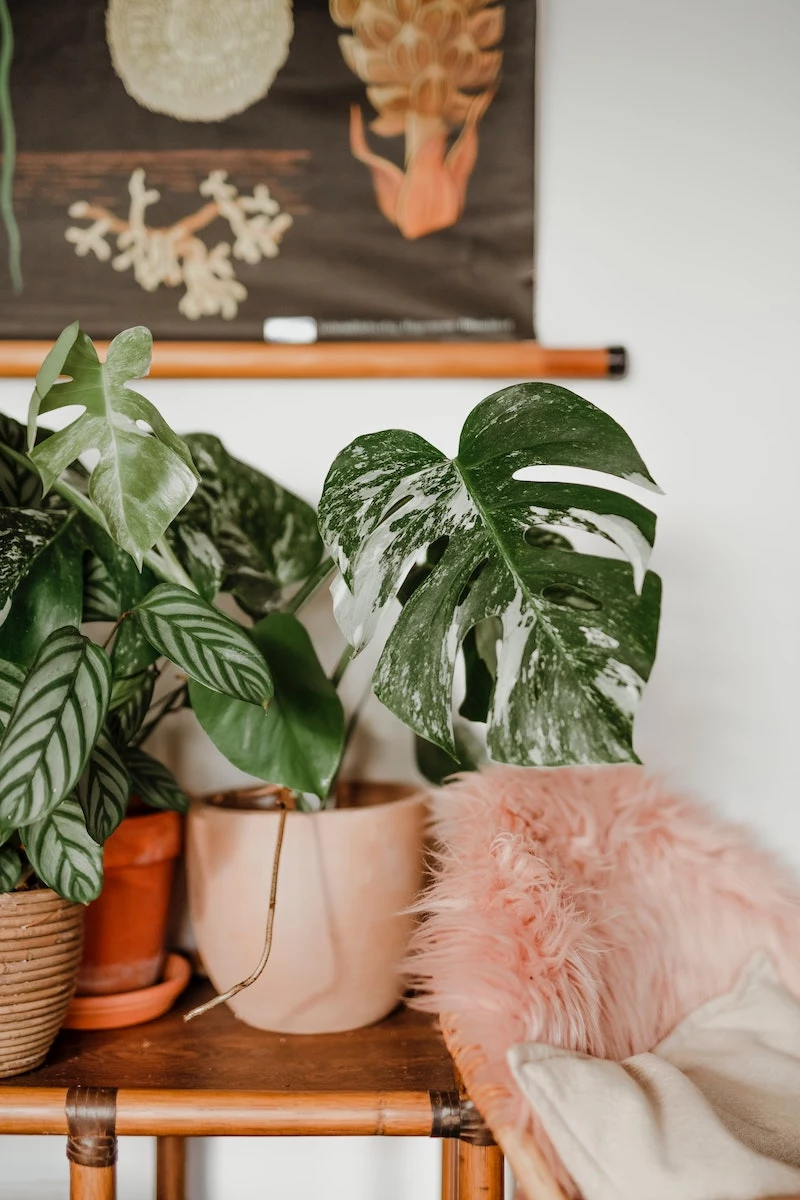
To save money: Head to a hardware store like Home Depot and grab an untreated cedar plank for under $10. It works just as well.
Quick tip on how to stake it in under 5 minutes:
- Gently push the pole or plank into the soil at the back of the pot, being careful not to ram it through the main root ball.
- Identify the “back” of your Monstera—it’s the side where the aerial roots are emerging from.
- Press the main stem gently against the support.
- Use some soft plant ties or twine to loosely secure the stem to the support in a couple of places. Don’t tie it too tightly! You just want to guide it upward.
And that’s really it. It’s not about having a magical green thumb. It’s about understanding the story of the plant and giving it what it’s looking for. Do that, and you’ll be rewarded with a stunning, thriving plant that makes your space feel like a little piece of the jungle.
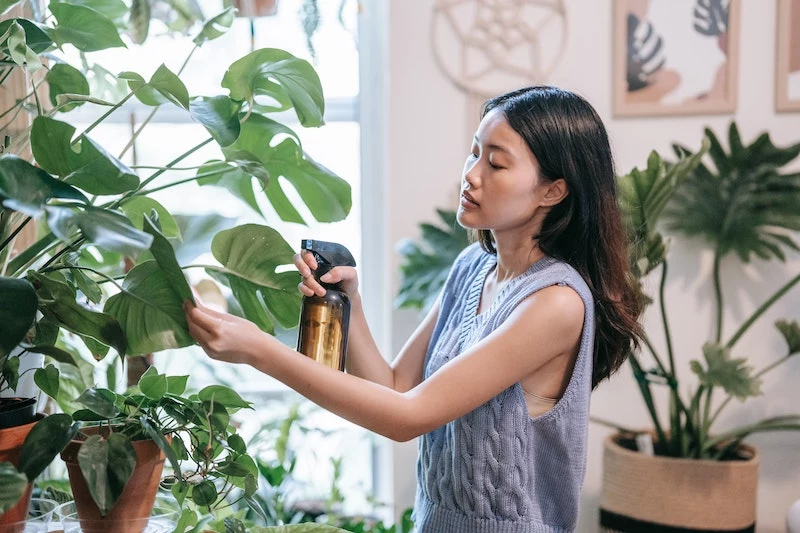
Inspirational Gallery
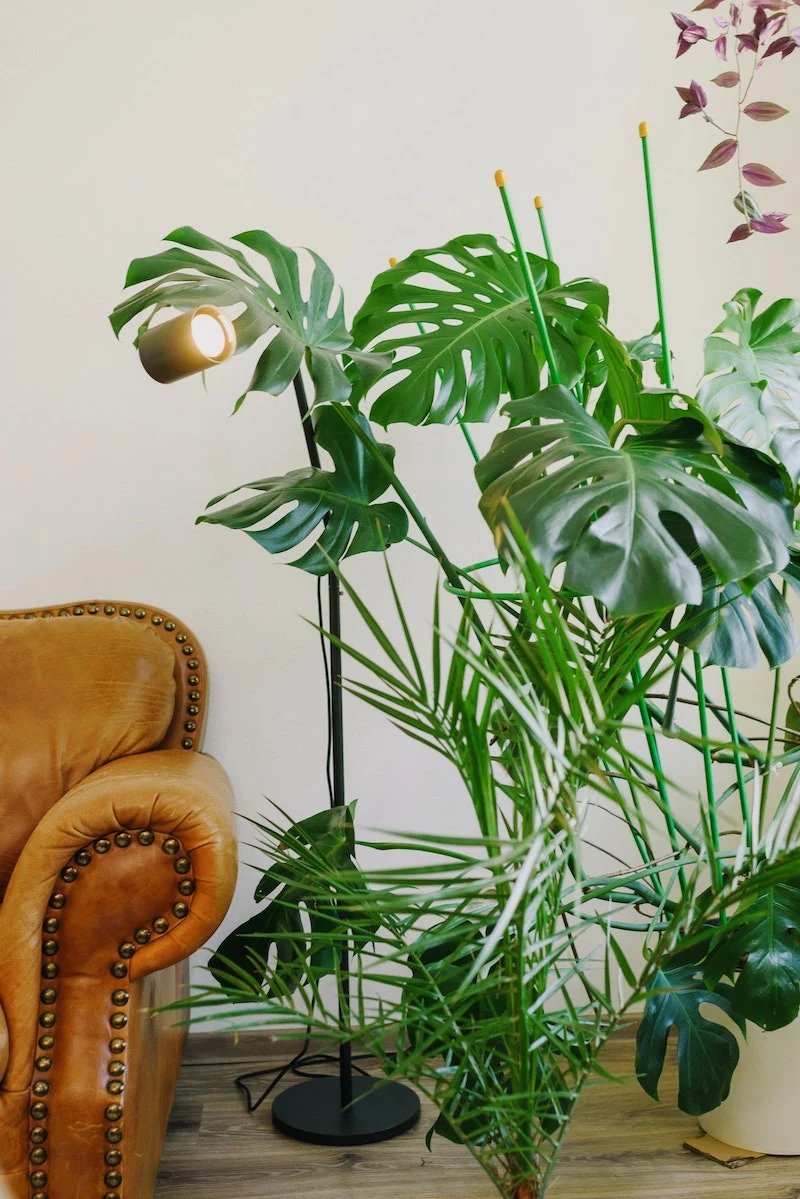
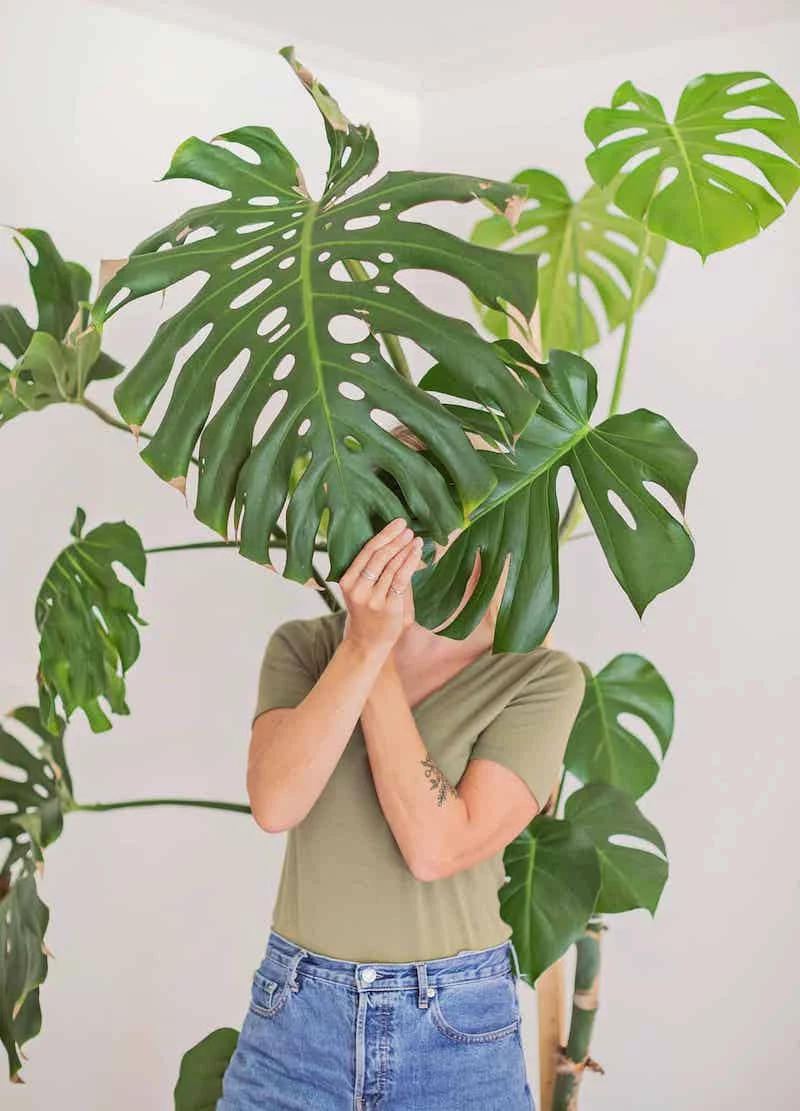
Forget generic potting soil from the bag. Your Monstera craves a chunky, airy mix that mimics its natural environment on the forest floor. A fantastic, easy-to-make blend is one part high-quality indoor potting soil, one part orchid bark, and one part perlite. This combination ensures excellent drainage and aeration, which is the number one defense against root rot.
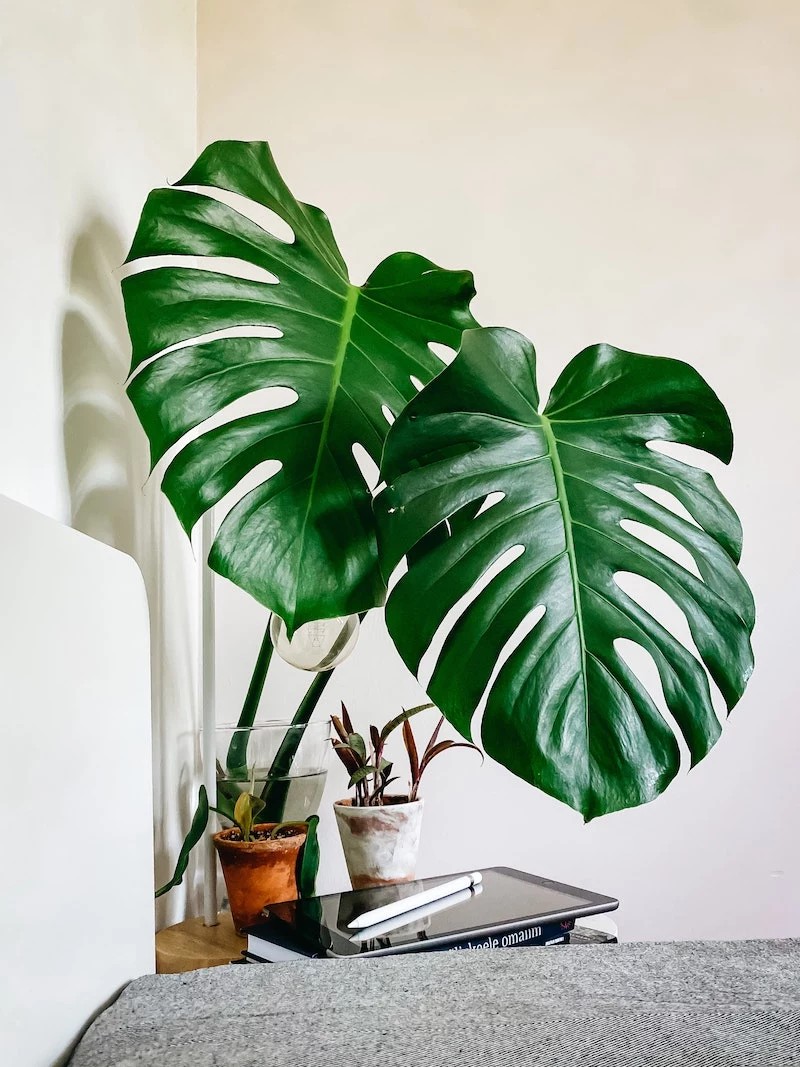
Give it a support pole, and it will reward you with splits. A Monstera without something to climb on will often produce smaller leaves and get leggy. By providing a coir or moss pole (the bendable ones from Mossify are a trendy choice), you encourage the plant to mature. As it latches on with its aerial roots, it feels secure, triggering the growth of those larger, beautifully fenestrated leaves you’re dreaming of.
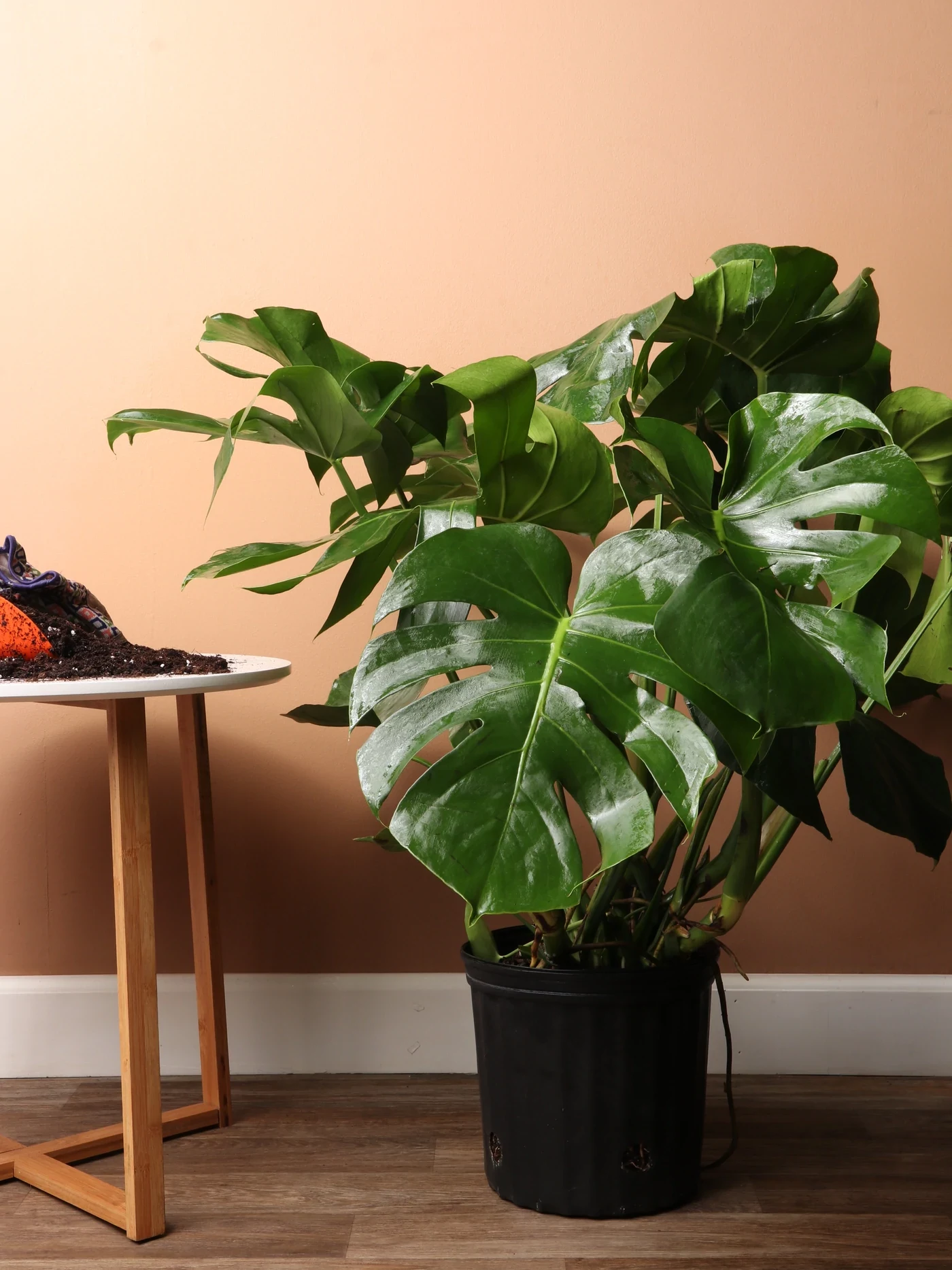
- Superior aeration that prevents root suffocation.
- Excellent drainage to combat overwatering.
- Mimics the natural, debris-rich soil of the rainforest floor.
The secret to these benefits? Skipping the standard soil and making your own chunky aroid mix. It’s surprisingly simple: just combine equal parts orchid bark, perlite, and a quality peat-free compost. Your Monstera’s roots will thrive.
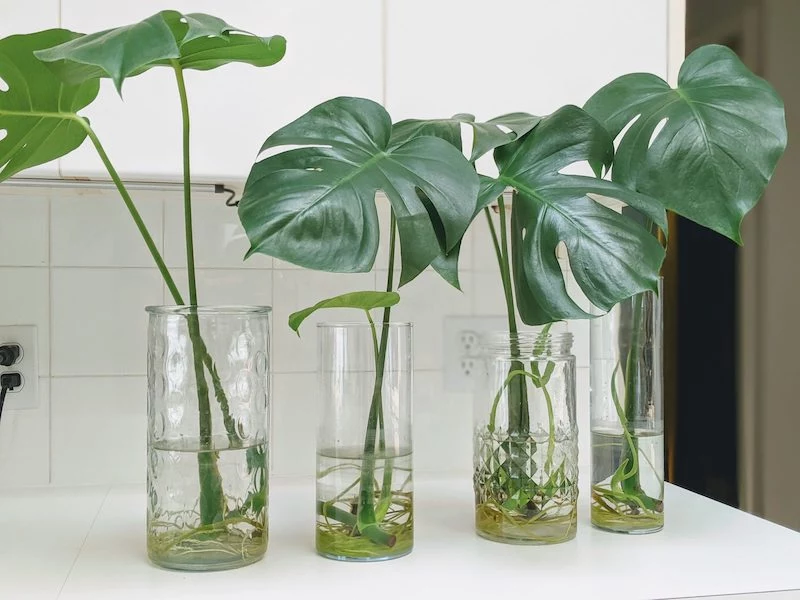
Wondering what those long, brown, finger-like growths are?
Those are aerial roots! In its native jungle habitat, your Monstera uses these to latch onto tree trunks and climb. Do not cut them. They are a sign of a healthy, maturing plant. You can either gently guide them back down into the pot’s soil, where they’ll absorb nutrients, or let them attach directly to their support pole. They are a key part of its identity.
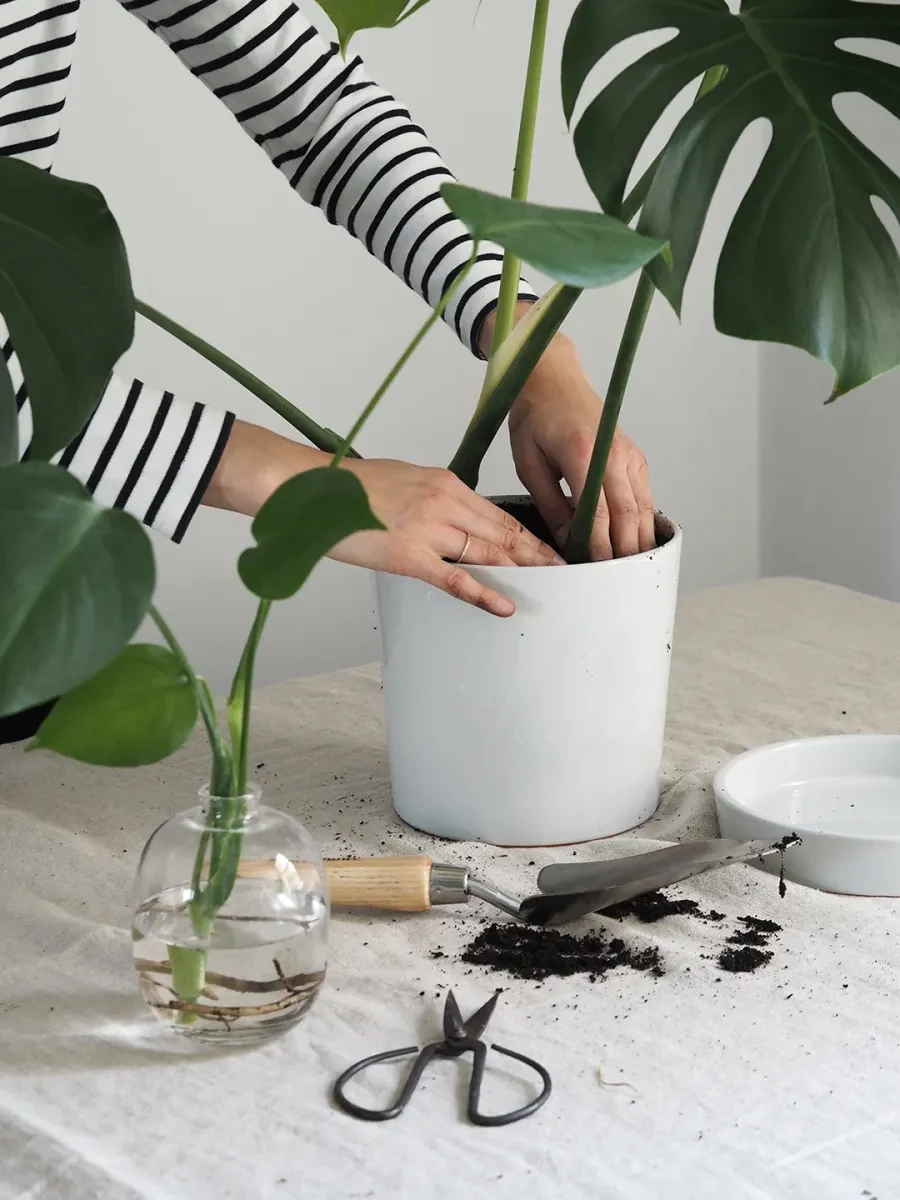
The specific name, deliciosa, means ‘delicious,’ referring to the plant’s edible fruit.
While your houseplant is very unlikely to bear fruit indoors, it’s a fun reminder of its exotic origins. In the wild, the mature fruit—sometimes called Mexican breadfruit—is said to taste like a combination of pineapple, coconut, and banana. However, the unripe fruit is full of oxalic acid and is toxic, so it’s best to just admire the leaves!
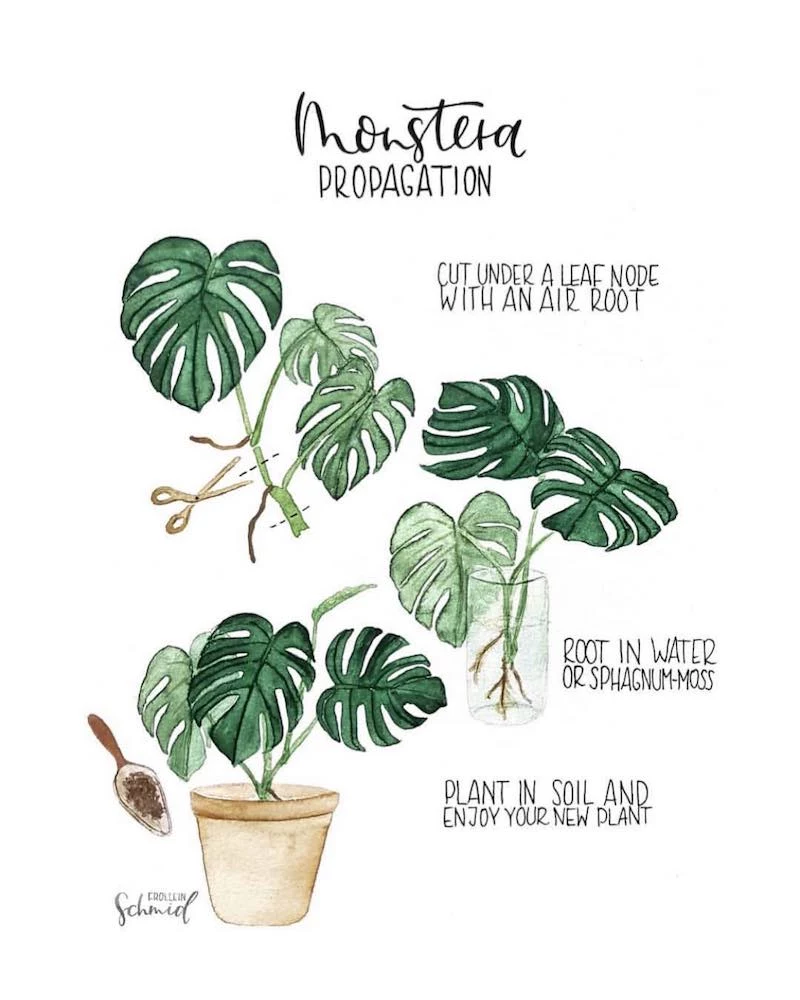
You’ve probably seen them taking over social media: the stunning variegated Monsteras. These plants have genetic mutations that create gorgeous splashes of white or cream on their leaves. They are cared for much like their green relatives but need more bright, indirect light to maintain their colors.
- Monstera Albo: Famous for its dramatic, pure-white patches in a marbled or sectoral pattern.
- Monstera Thai Constellation: A more stable variety with smaller, cream-colored speckles scattered across the leaf, resembling a galaxy.
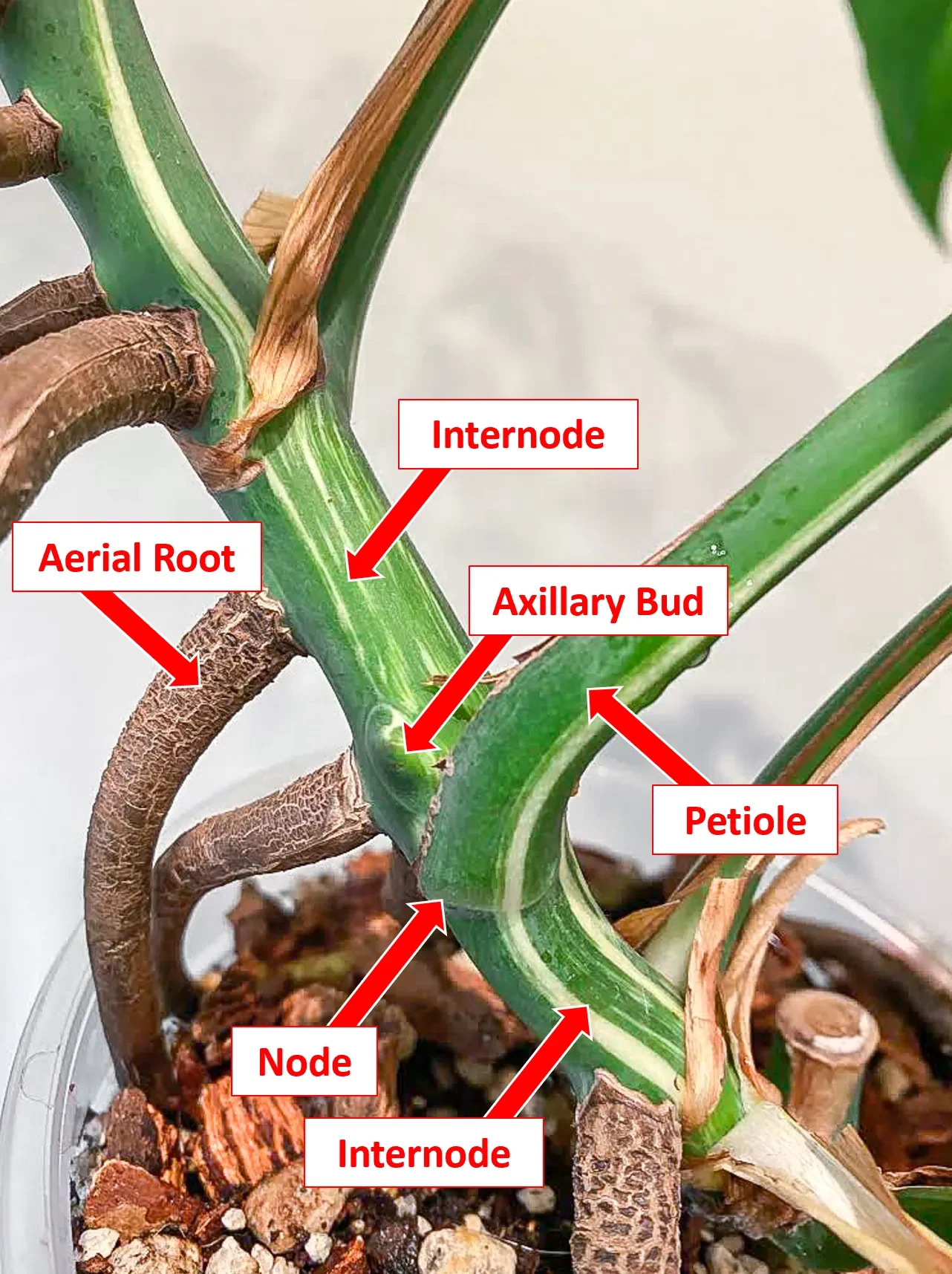
The Small Starter Plant: Inexpensive and lets you experience the joy of watching it mature. Getting that first fenestrated leaf under your care is a massive win. Perfect for patient owners on a budget.
The Mature Specimen: An instant ‘wow’ factor. You get the iconic split leaves from day one, but it comes with a higher price tag. Ideal if you want immediate jungle vibes.
Ultimately, both paths lead to a stunning plant; the choice is about patience versus budget.
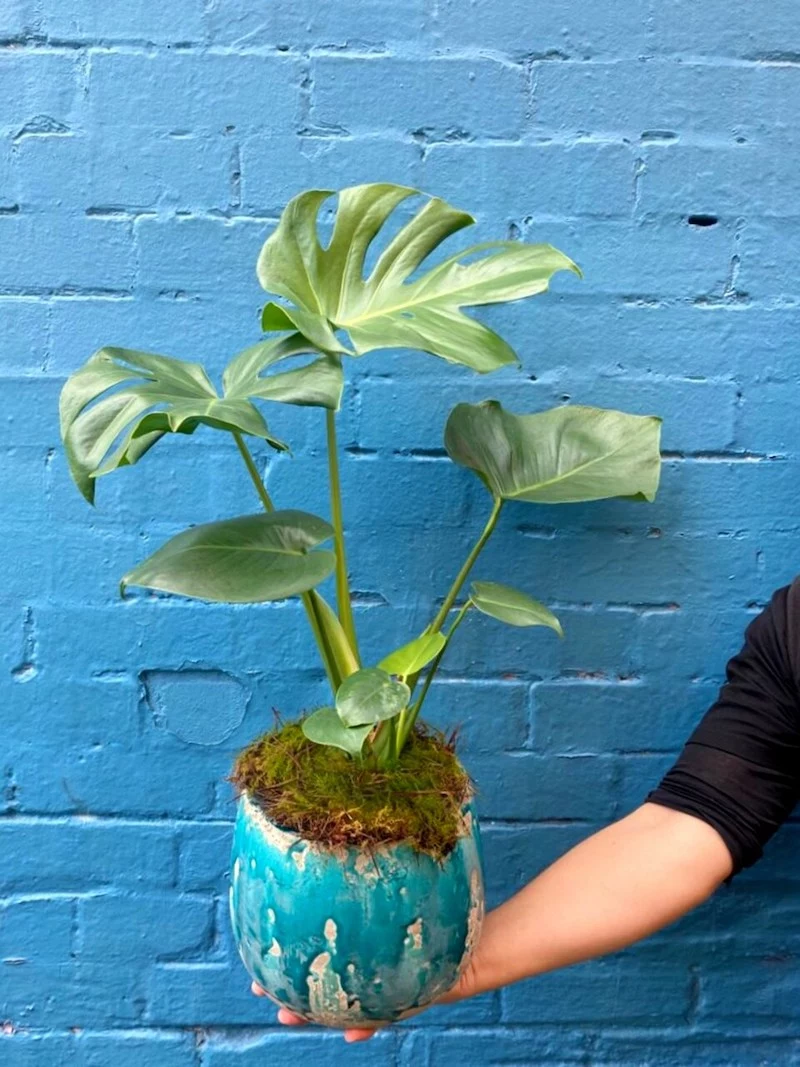
- Don’t cut the aerial roots! They are essential for climbing and stability. Gently tuck them into the soil or guide them to the pole.
- Avoid a pot that’s too large. Monsteras prefer to be slightly snug. A pot that is too big holds excess water and is the fastest way to get root rot.
- Wipe the leaves. A layer of household dust can block light and hinder photosynthesis. A quick wipe with a damp cloth every few weeks keeps them healthy and glossy.
A single leaf on a happy, mature Monstera deliciosa can grow to be over 2 feet wide.
This massive surface area is the plant’s engine, acting as a giant solar panel to soak up every bit of available light. For you, this translates to a powerful natural air purifier. It’s also why keeping the leaves dust-free is so important—it’s not just for aesthetics, it’s for the health of your plant’s ‘lungs’.










